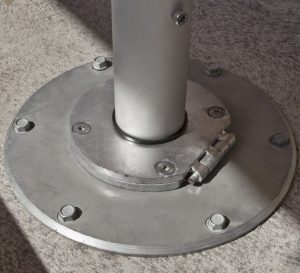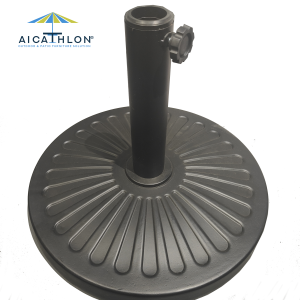More
A Comprehensive Guide to Different Types of Patio Umbrella Bases
A Comprehensive Guide to Different Types of Patio Umbrella Bases
Introduction:
When it comes to enjoying the outdoors, a patio umbrella provides much-needed shade and protection from the sun’s harsh rays. However, to ensure stability and functionality, choosing the right patio umbrella base is essential. With numerous types of bases available in the market, it can be overwhelming to make a decision. In this comprehensive guide, we will explore the different types of patio umbrella bases, their features, advantages, and drawbacks, to help you select the perfect base for your outdoor oasis.
-
Freestanding Bases:
Freestanding bases are the most common and versatile option for patio umbrellas. They consist of a sturdy stand with a weight or counterbalance system, providing stability for the umbrella. These bases are typically made from materials like cast iron, steel, or plastic. Freestanding bases are suitable for various umbrella sizes and can be moved around easily, making them ideal for any outdoor space.
Advantages:
- Portability and ease of movement.
- Compatible with different umbrella sizes.
- Sturdy construction provides stability.
- Wide range of design options available.
Drawbacks:
- May not be as wind-resistant as other types of bases.
- Heavier freestanding bases can be difficult to transport.
-
Offset Bases:
Offset bases, also known as cantilever bases, are designed for umbrellas with an offset pole, allowing for greater flexibility in positioning the shade. These bases feature a sturdy cross-shaped stand and a weighted base, which provides stability while allowing you to position the umbrella over specific areas without obstruction.
Advantages:
- Versatile positioning options.
- Provides unobstructed shade, as the pole is not in the center.
- Ideal for areas with furniture or obstructions.
Drawbacks:
- Requires a larger space due to the offset design.
- Tends to be more expensive compared to freestanding bases.
- May require additional support or anchoring in windy conditions.
-
Table-Mounted Bases:
Table-mounted bases offer a convenient and space-saving solution for smaller outdoor spaces or patio dining sets with umbrella holes. These bases are designed to fit into the center hole of a patio table and provide stability for the umbrella. They are usually made from materials like plastic or metal and come in various sizes to accommodate different table dimensions.
Advantages:
- Space-saving option for smaller outdoor areas.
- Stabilizes the umbrella within the patio table.
- No need for an additional base occupying floor space.
Drawbacks:
- Limited mobility as the umbrella is attached to the table.
- Not suitable for larger umbrellas or areas without a table.
Conclusion:
Selecting the right patio umbrella base is crucial for ensuring stability, functionality, and overall enjoyment of your outdoor space. Freestanding bases offer versatility and ease of movement, offset bases provide flexibility in positioning, and table-mounted bases save space and offer stability within a patio table. Consider factors such as umbrella size, wind conditions, and personal preferences when choosing the appropriate base for your patio umbrella. By understanding the different types and their features, you can make an informed decision that perfectly complements your outdoor oasis. Invest in a high-quality patio umbrella base, and you’ll be able to relax comfortably in the shade for years to come.















